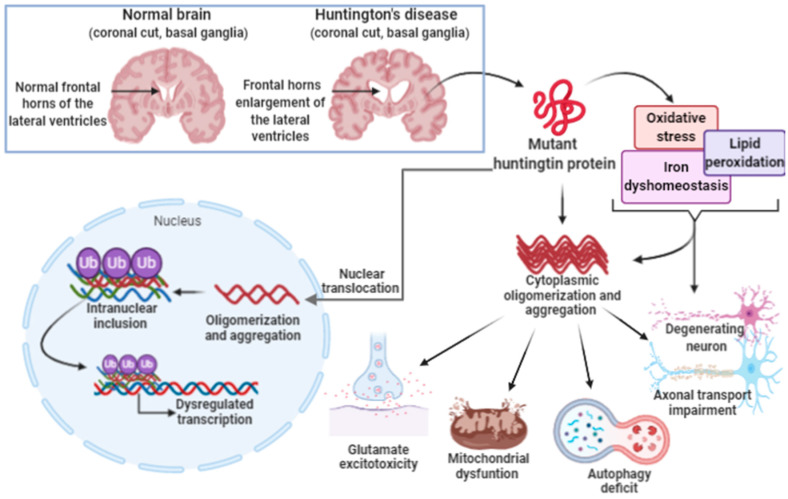Figure 6.
Huntington’s disease. Huntington’s disease is caused by the repetition of autosomal dominant CAG trinucleotide in the Huntingtin gene (HTT gene) on chromosome 4, giving rise to the mutant huntingtin protein. The mutated protein translocates to the nucleus and remains in the cytoplasm. In the nucleus, association, oligomerization and aggregation with other proteins occurs, leading to the formation of inclusions. Protein inclusions disrupt the transcriptional process in nerve tissue cells. In the cytoplasm, the oligomerization, aggregation and precipitation of the huntingtin protein occurs. This process alters the metabolism and both intra- and extra-cellular signaling pathways. The increase in oxidative stress, lipid peroxidation and iron dyshomeostasis contribute to the aggregation and oligomerization of huntingtin protein with other cytoplasmic proteins. Aberrant protein aggregation increases the excitotoxicity of glutamate. Mitochondrial dysfunction changes autophagy mechanisms, and transport in the neuronal axon, leading to nerve cell degeneration.

